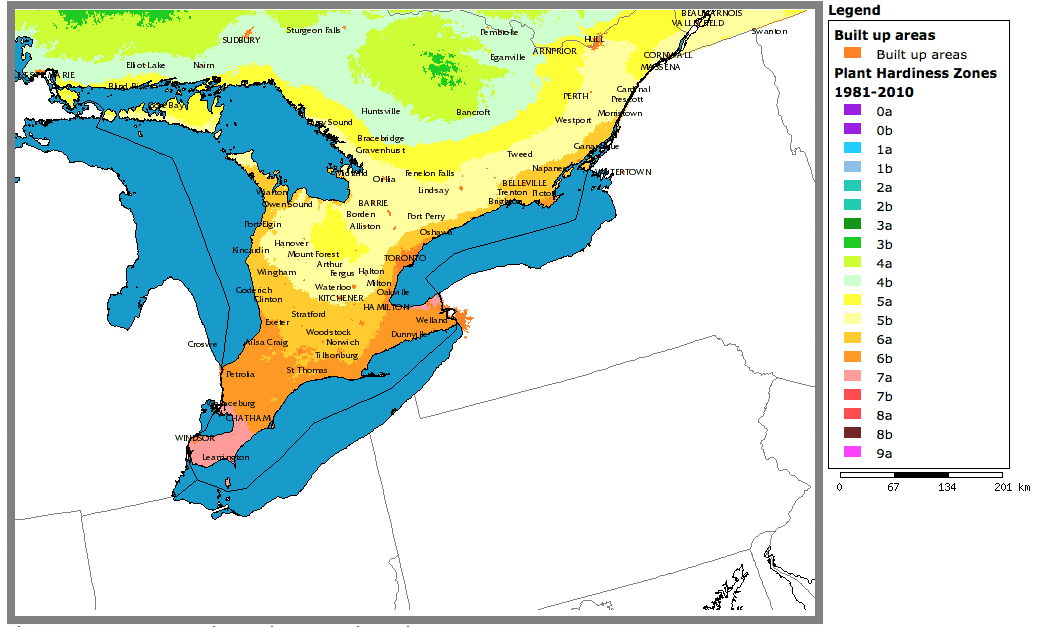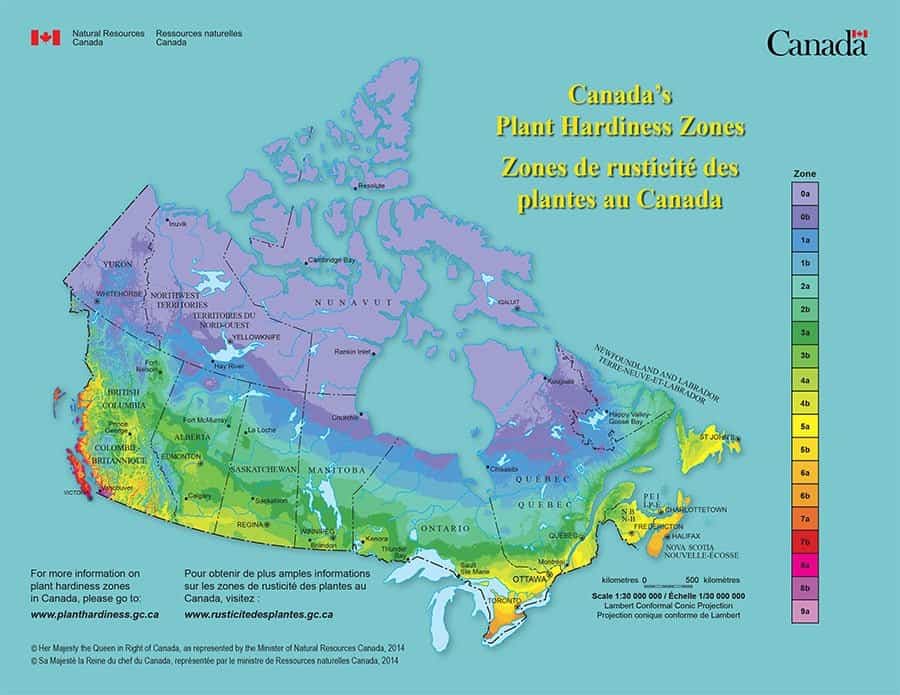As gardeners in a northern climate, we’re quite aware of the challenges of growing plants that may be borderline hardy in the region where we live. “Will it grow in my zone?” is the pertinent question about winter hardiness for perennial plants.
Scientists have developed maps of plant hardiness zones for Canada based on seven climate variables (not only the average annual minimum temperature). Now they are beginning to assess how changes in climate affect what can be grown in different regions.
New plant hardiness data compiled by Natural Resources Canada over a 50-year period was presented in the April 2014 issue of BioScience, published by Oxford University Press. “Change and Evolution in the Plant Hardiness Zones of Canada,” by Daniel W. McKenney and others, describes a northern shift in zones in western Canada, but less dramatic shifts in southeastern Canada.
There is change, but it’s not necessarily dramatic. For instance, they compared 62 northern tree species over the 50-year interval and found an average northward shift of 57 kilometres in what they call the “tree climate envelope.” For species in western Canada, the shift north averages 75 kilometres versus only 38 kilometres for species in eastern Canada.
The update is based on plant hardiness maps originally developed by Agriculture Canada and the U.S. Department of Agriculture. They compared the data used for the original zones and maps from the 1931 to 1960 period with more recent observations used for the 1981 to 2010 indexing of plant hardiness.
Most areas in Canada along the U.S. border are at least half a zone higher now. The changes in hardiness zones is more pronounced in western Canada:
- Vancouver 7a to 8b
- Calgary 2b to 4a
- Winnipeg 3a to 3b
- Toronto 6a to 7a
- Montreal 5a to 5b
- Halifax 6a, no change
To find the change for your community, there is an alphabetical listing on the Natural Resources Canada website at http://www.planthardiness.gc.ca/?m=22&lang=en.
“Our findings present a complex picture of plant hardiness changes in Canada over the 50-year interval examined,” the authors write. However, “these changes signal an increase in the productivity and diversity of plants that can be grown in Canada,” they add.
The researchers also conclude that “extreme events, such as the increased incidence and severity of late spring frosts and the ongoing risk of extreme cold events in southeastern Canada, may limit the extent to which these shifts translate into planting success. In the gardening context, extreme events may be tempered by cultural practices (e.g., covering plants during frost, watering during drought, but, in larger agricultural and forestry operations, the selection of less-hardy species and varieties … still involves considerable risk.”
For more information:
- Plant Hardiness Zone map the can be searched: gardenmaking.com/plant-hardiness-zones
- Natural Resources Canada plant hardiness website: http://planthardiness.gc.ca
- Lookup plant hardiness zone by community: http://www.planthardiness.gc.ca/?m=22&lang=en
- Potential range maps for 6,303 species: http://planthardiness.gc.ca/index.pl?m=12&p=1&lang=en
- Scientific article in Bioscience (payment required): http://bioscience.oxfordjournals.org











I live in Kuujjuaq, P.Q. located on the Ungava Bay of Northern Quebec. Our region is called Nunavik in our mother language. The vegetation in Kuujjuaq includes a variety of trees, especially Tamerack and Spruce. When I was a child, these trees only grew only to a few feet and were more shrubs than trees. Nowadays we have large trees, it is especially noticeable in the Tamerack which now grows to30 ft or taller. The bush is changing a lot too getting thick with the vegetation. Some areas that we used to pick berries on are now covered by trees and bush. Here in Kuujjuaq we are listed as garden zone 0A on the Canadian hardiness map. Though I understand that many factors came into play when the map was created I can’t believe we should be in the same zone as the rest of the north, especially the far north such as Nunavut where there is a very limited bush that grows and no trees at all.I am raising this issue as I would like to start gardening and would like to try some perennials but I hesitate until I have more information. Any additional information would be appreciated. Thank you!